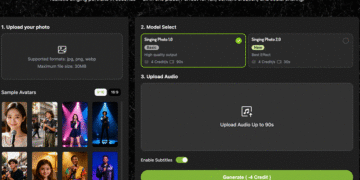For those looking to achieve success on Amazon, pay-per-click (PPC) advertising is not optional, it’s a downright necessity.
With millions of products battling it out for attention, especially in competitive markets like the UK, getting yours in front of shoppers often takes more than a great title and decent reviews. PPC is your ticket to visibility, but running a campaign blindly is the fastest way to burn through cash.
Our guide will walk you through how to run PPC on Amazon with clarity, whether you’re launching your first product or trying to turn around sluggish sales. Let’s begin.
Know the Basics Before You Spend a Penny
Amazon PPC means you’re running advertisement for your product to show up when someone searches for something similar.
Every time someone visits your ad by clicking on it, you pay a fee to Amazon for that click. It sounds simple enough, but if you go in without a plan, your budget will vanish before you see any real return.
Amazon offers three different types of campaigns to those interested in its PPC program. Sponsored Products being the bread and butter, as they promote individual listings and are what most sellers use.
Sponsored Brands allow you to feature your logo and multiple products, whereas Sponsored Display is more advanced, targeting shoppers even outside Amazon.
If you’re unsure where to begin or how to manage these campaigns effectively, many sellers turn to Amazon PPC management services to avoid costly mistakes and maximize their ad spend.
Start with Sponsored Products. It’s the most beginner-friendly and delivers results quickly when done right.
Getting Started: Step-by-Step
- Log in to your Seller Central account. Go to the menu in the top left side, and open the ‘Campaign Manager’ option that you will find under the Advertising section.
- Create a new campaign by selecting the ‘Create Campaign’ button.
- Choose ‘Sponsored Products’.
- Name it something you can recognize.
- Next, you’ll set a daily budget. Don’t overthink this. Start small. £10 to £20 a day is more than enough to gather useful data. You can always scale up once things start performing. Hit ‘Launch Campaign’ button when you’re done setting it up.
Choose a targeting method. One is Automatic targeting, where Amazon decides for you where to show your ads based on the keywords and product information you provide. It is the preferred option if you are a beginner.
Manual targeting gives you full control over keywords and bids, but you’ll need to know what you’re doing.
For your first campaign, use automatic targeting. Let Amazon collect the data. Once you have some results, shift to manual targeting using the keywords that are converting.
Keywords Make or Break Your Campaign

If your ads aren’t showing up where they should, or worse, attracting clicks that don’t convert, your keywords are the likely culprit.
Start with broad match keywords and analyze which ones are leading to actual sales. Tools like Helium 10, Jungle Scout or even Amazon’s own reports will help you figure out what’s working.
Once you have a list of winning keywords, switch them into a manual campaign and apply exact match targeting.
This ensures your ads show only when shoppers search for that exact phrase. Your budget is utilized in the best way because it is only spent on the right audience, giving you great results.
Don’t forget negative keywords. If ‘free shipping’ keeps draining your ad budget without sales, mark it as negative. That way, your ad won’t show up when someone searches for it.
Bids, Budgets, and Not Losing Your Shirt
Amazon PPC isn’t about outbidding everyone; it’s about smart bidding. Start with default bids that Amazon suggests, then monitor performance.
When you observe that a keyword is successfully driving sales, think about boosting its bid just a little. If one’s costing you but not converting, lower the bid or pause it altogether.
Check your ACoS (Advertising Cost of Sale). It shows you how much money you’re spending to generate each sale. For UK sellers, this is particularly important when working within narrow profit margins and pricing in pounds (£). For instance, if you’re selling a product for £20 and spending £5 to get the sale, your ACoS is 25%.
Keep an eye on your daily budget. If you’re running out of budget before midday, you might be missing out on sales later in the day.
In case you’re not spending the full amount, it might mean your bids are too low or your keywords too narrow. If you’re unsure how to optimize effectively, partnering with the best Amazon PPC agency can provide expert guidance and save you from costly mistakes.
Optimize or Die Trying
Running PPC isn’t a ‘set it and forget it’ job, it is kind of a continuous grind for sellers looking to get the most out of it.
Log into your Campaign Manager every few days. Look at what’s working. Look harder at what’s not. Pause underperforming keywords. Shift more budget to winning campaigns. Add new keywords based on real search terms shoppers are using.
Use placement adjustments. Amazon lets you bid more aggressively to appear at the top of search results. This can be powerful, but only use it on campaigns that are already profitable.
Check your search term reports weekly. They reveal exactly what shoppers typed in before clicking your ad. It’s pure gold, so use it to refine your keywords and create better product listings.
Running multiple campaigns? Structure them cleanly. Group similar products together. Avoid lumping everything into one messy campaign.
It makes tracking and optimization harder than it needs to be.
Conclusion
Running PPC on Amazon isn’t just about getting clicks, it’s about making sure those clicks turn into sales. That only happens when you execute a mix of the right targeting, smart bidding, and ongoing optimization. You don’t need a massive budget to make it work. You need patience, attention to detail, and a willingness to tweak things until they click. Once you’ve got a system in place, Amazon PPC becomes less of a cost center and more of a growth engine. It’s not magic, but when done right, it might feel like it. Now you know how to run PPC on Amazon, without wasting time, money, or your sanity. Make good use of this knowledge to grow your Amazon business.
If you’re looking to take your Amazon PPC campaigns to the next level and want expert support, consider partnering with a UK’s local professional agency. Bizistech, recognized for its deep expertise in Amazon advertising, offers tailored PPC strategies that drive real results. Whether you’re struggling with campaign optimization or just need hands-on technical support, their team can help you manage and scale your ads effectively.











































































